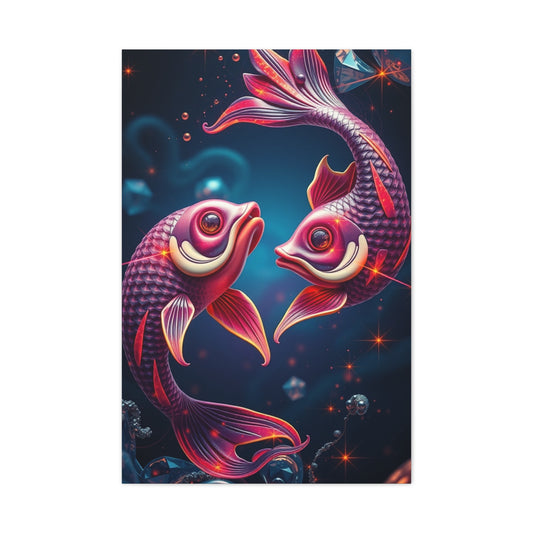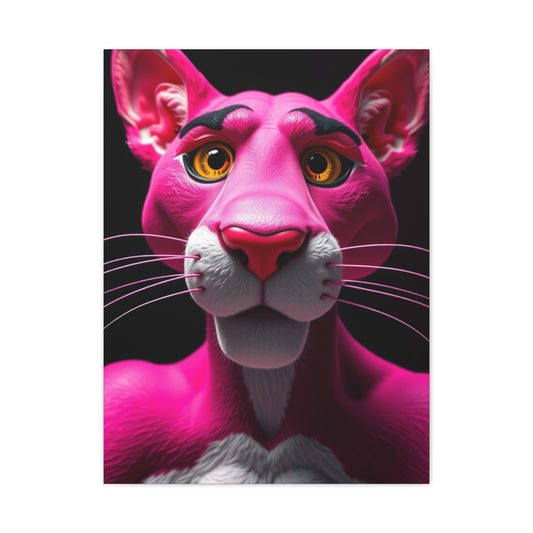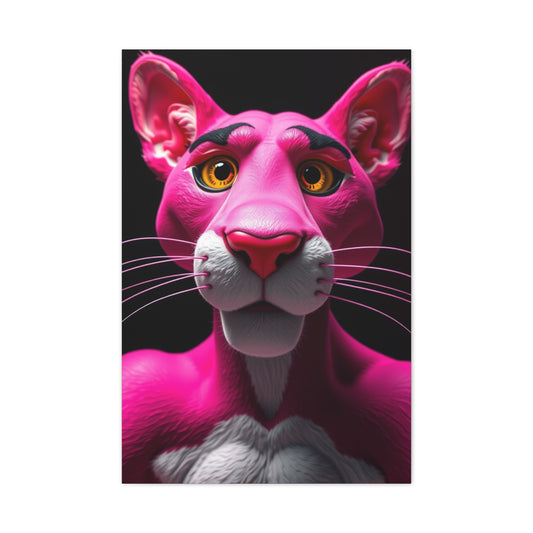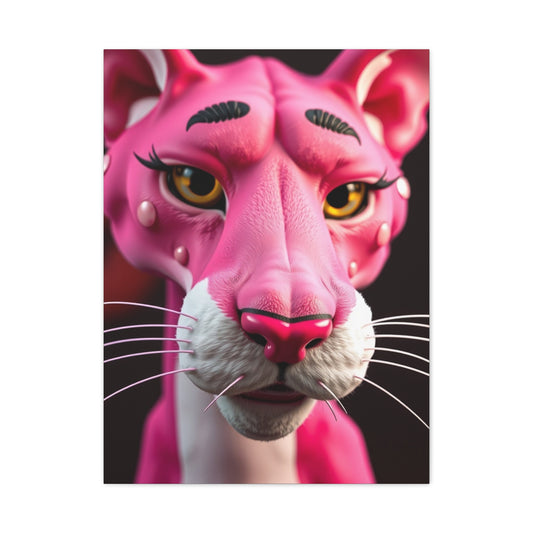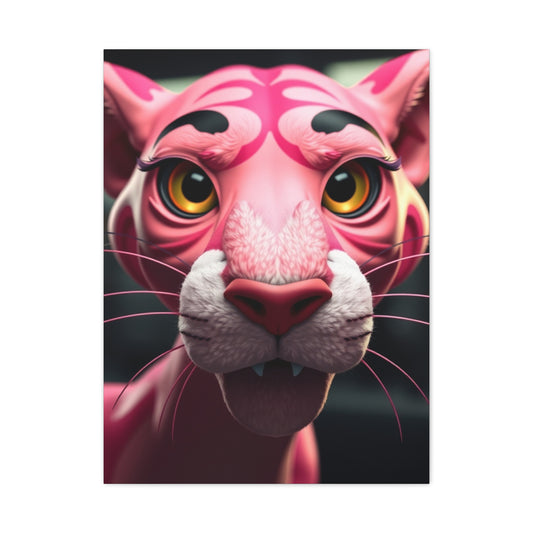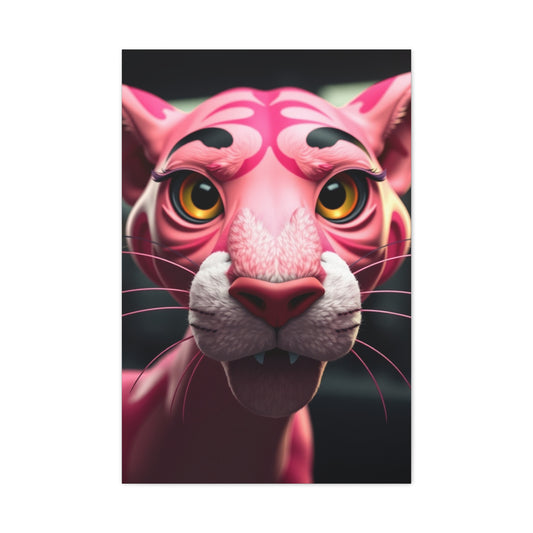The transition from Brazil's verdant Atlantic Forest to Alberta's expansive grasslands represents more than a geographical shift spanning ten thousand kilometers; it embodies a profound transformation of ecological understanding, photographic opportunities, and naturalistic perspectives. This dramatic metamorphosis from Austral summer's tropical abundance to Boreal winter's austere beauty creates an extraordinary juxtaposition that challenges both photographer and naturalist alike. Nose Hill Park in Calgary, Alberta, serves as an exceptional introduction to this remarkable landscape transformation, offering unparalleled opportunities for wildlife observation and nature photography within an urban-adjacent environment.
The park's distinctive nomenclature derives from its prominent geographical features, where rolling elevations create natural vantage points across Calgary's urban expanse while simultaneously providing sanctuary for diverse wildlife populations. This remarkable urban oasis encompasses environmental complexities that rival many wilderness destinations, making it an essential destination for photographers seeking authentic prairie ecosystem experiences without venturing far from metropolitan amenities.
Understanding Alberta's Prairie Ecosystem Dynamics
Alberta's grassland environments represent one of North America's most endangered ecosystems, with less than twenty percent of original prairie habitats remaining in their natural state. Nose Hill Park preserves a crucial fragment of this vanishing landscape, maintaining native plant communities and wildlife corridors that support diverse species populations throughout changing seasons. Understanding these ecological relationships proves essential for successful wildlife photography and meaningful environmental appreciation.
The prairie ecosystem operates through intricate relationships between native grasses, wildflowers, and wildlife populations that have evolved over millennia. These interdependent systems create seasonal rhythms that dictate animal behavior patterns, feeding opportunities, and reproduction cycles that directly influence photographic possibilities throughout the year. Recognizing these natural cycles enables photographers to anticipate optimal timing for specific species encounters and behavioral documentation.
Native grass species including rough fescue, western wheatgrass, and northern wheatgrass dominate the landscape, providing essential habitat structure and food sources for herbivorous wildlife populations. These grasses maintain active growth cycles that influence grazing patterns and animal distribution throughout the park's extensive terrain. Understanding vegetation cycles helps predict wildlife movements and concentration areas during different seasons.
The park's elevation variations create microclimates that support diverse plant communities, from moisture-loving species in protected valleys to drought-resistant varieties on exposed hillsides. These habitat variations concentrate different wildlife species in specific areas, enabling targeted photographic approaches for particular species or behavioral observations. Recognizing these microhabitat preferences significantly improves wildlife encounter success rates.
Navigating Nose Hill's Expansive Territory
Spanning an impressive 1,129 hectares, Nose Hill Park stands as one of Canada's largest urban natural areas, dwarfing famous metropolitan parks like New York's Central Park by more than three times. This expansive territory encompasses diverse topographical features including rolling hills, protected valleys, seasonal wetlands, and exposed ridgelines that create varied photographic opportunities throughout the year.
The park's trail system extends across multiple difficulty levels, accommodating casual walkers and serious hikers while providing access to remote areas where wildlife concentrations remain highest. Understanding trail configurations and access points enables efficient exploration while minimizing disturbance to sensitive wildlife populations. Strategic route planning maximizes photographic opportunities while respecting ecological preservation requirements.
Navigation through Nose Hill's extensive territory requires understanding both formal trail systems and informal pathways created by wildlife movements. These natural corridors often lead to prime observation locations where animal behavior can be documented without intrusion. Learning to read landscape features and animal signs enhances exploration success while developing deeper environmental understanding.
Weather conditions significantly impact navigation and wildlife visibility throughout Nose Hill's terrain. Alberta's continental climate creates dramatic seasonal variations that influence both accessibility and photographic conditions. Winter conditions require specialized equipment and clothing while offering unique opportunities for snow-covered landscape photography and cold-adapted wildlife behavior documentation.
Mastering Prairie Wildlife Photography Techniques
Prairie environments present a unique set of challenges for wildlife photographers. Unlike forested or mountainous habitats, prairies are vast, open spaces with few natural cover options. The challenges presented by expansive grasslands—such as fluctuating weather conditions, unpredictable wildlife behavior, and the absence of dense vegetation—require photographers to adapt their techniques to capture the beauty of the landscape and its inhabitants.
Prairies are characterized by wide, uninterrupted views, which allow wildlife to be visible from great distances. However, this vast openness makes it difficult to approach animals without disturbing them. Understanding the environmental factors that influence the prairie's ecosystem is essential to developing effective photography strategies. This knowledge helps photographers anticipate the optimal times to shoot, choose the right equipment, and understand the intricacies of light, landscape, and animal behavior that will impact the final image.
In this guide, we will explore the specialized techniques and equipment needed to succeed in prairie wildlife photography, from the importance of telephoto lenses to methods for camouflage and light management in challenging prairie conditions.
The Role of Long Telephoto Lenses in Prairie Photography
In prairie wildlife photography, the use of long telephoto lenses is indispensable. The wide-open spaces of the prairie require photographers to shoot from significant distances to avoid disturbing wildlife. Most animals in these environments are highly sensitive to human presence and are likely to flee if approached too closely. This is especially true for prairie birds, which are quick to take flight at the slightest movement.
Long focal lengths, typically ranging from 400mm to 800mm, are essential tools for capturing sharp, detailed images of wildlife from a distance. A 400mm lens is a great starting point, offering enough reach for many wildlife subjects while maintaining image quality. For more distant subjects, a lens with a focal length of 600mm or 800mm may be necessary. When used with a camera equipped with a full-frame sensor, these lenses allow photographers to fill the frame with wildlife, even from far away.
Teleconverters are another useful accessory for prairie photographers, as they can extend the reach of your telephoto lens. A 1.4x or 2x teleconverter increases the effective focal length, allowing photographers to capture wildlife that might be too distant for a regular telephoto lens. However, it’s important to note that teleconverters slightly reduce image quality by introducing some loss of sharpness and light. High-quality teleconverters are essential for maintaining acceptable performance when extending focal lengths in challenging conditions.
Camouflage and Concealment Strategies in the Prairie
Unlike forests, where photographers can rely on trees, shrubs, and other natural cover to hide their presence, prairies require a different approach to camouflage and concealment. The flat, open nature of the landscape means that animals have an unobstructed view for miles, so maintaining a low profile becomes critical.
Low-profile blinds are one of the most effective tools for concealing yourself in the prairie. These lightweight, portable structures are designed to blend in with the natural environment and allow photographers to remain hidden while capturing images. The best blinds for prairie photography are those that mimic the colors and textures of the grassland, such as those with earth-tone patterns and camouflage designs.
When setting up your blind, it’s important to consider the wind direction. Wind carries scent, and wildlife can often detect humans from far away if they catch wind of an unfamiliar odor. To minimize your scent profile, position your blind so that the prevailing winds blow your scent away from the animals you plan to photograph. Additionally, always be mindful of your movement. Sudden movements can alert nearby wildlife to your presence, so take care to move slowly and deliberately when setting up or repositioning yourself in the field.
Another essential technique for effective concealment is the choice of clothing. Earth-toned clothing, such as muted greens, browns, and tans, helps photographers blend in with the natural prairie environment. Avoid wearing bright colors or anything that might contrast with the landscape, as this will make you more visible to the wildlife. If you do not have access to a blind, consider lying low in the grass or finding other natural cover to keep out of sight.
Light Management in Prairie Photography
Light is one of the most challenging aspects of prairie wildlife photography. The expansive sky, often clear of obstructions, can create harsh lighting conditions that are difficult to control. The high contrast between bright, sunlit skies and darker wildlife subjects can result in overexposed backgrounds or underexposed animals. This is where light management techniques come into play.
The first thing to understand when working in the prairie is how the expansive sky influences exposure. In wide-open spaces, the sky often dominates the composition, which can result in bright, washed-out backgrounds if not managed properly. When photographing animals, this can lead to underexposed subjects because of the camera’s exposure settings.
Graduated neutral density (ND) filters are invaluable in these situations. These filters help balance the exposure between bright skies and darker subjects by darkening the sky without affecting the rest of the scene. The use of graduated ND filters can help ensure that both the animal and the background are properly exposed. In addition, careful exposure compensation allows for fine-tuning of the image to ensure that no detail is lost in the highlights or shadows.
Light in prairie environments changes rapidly throughout the day. The “golden hour,” the period shortly after sunrise and just before sunset, provides soft, warm lighting that enhances the colors of both wildlife and the landscape. This is the best time for photographing animals, as the light is diffused and more flattering, creating long, soft shadows and rich color saturation. During midday, the sunlight can be harsh, casting strong shadows that may not be desirable for some compositions. In these cases, a diffuser can be used to soften the light and reduce harsh shadows on your subject.
Understanding Animal Behavior for Successful Wildlife Approaches
A crucial aspect of prairie wildlife photography is understanding the behavior of the animals you are trying to capture. In open environments, animals tend to be more cautious, and they may be quicker to flee at the sight of a photographer. Being aware of their behavior patterns can help you plan your approach and increase your chances of getting the shot.
In prairie habitats, animals are often most active during specific times of the day, particularly in the early morning or late evening. Understanding these activity patterns can help you time your shoots for optimal results. For example, prairie birds tend to be more active during the cooler hours of the morning, while larger mammals may be more active at dawn or dusk. By observing and learning the habits of your subjects, you can anticipate their movements and position yourself accordingly.
When approaching wildlife in the prairie, it’s essential to remain as unobtrusive as possible. Use a telephoto lens to capture wildlife from a distance without disturbing them. Sudden movements or loud noises can cause animals to flee, so always take slow, deliberate steps. If you’re using a blind, wait for the animals to become accustomed to your presence before attempting to photograph them. With patience and respect for the animals' space, you’ll increase your chances of capturing natural behavior without alarming the wildlife.
Weather and Lighting Effects on Prairie Photography
The weather in prairie environments is unpredictable, and photographers must be ready to take advantage of changing conditions. Prairie storms, rolling clouds, and mist can add drama and atmosphere to your images, creating striking contrasts and visual interest. However, stormy weather can also pose risks, so it’s important to prioritize safety.
Storms in prairie regions can create dramatic lighting effects, with the interplay between dark clouds and sunlight creating contrast and texture. Photographers can use this natural drama to their advantage, capturing images of wildlife set against stormy skies or using backlighting techniques to create silhouettes of animals. When photographing wildlife in these conditions, it’s important to use fast shutter speeds to freeze movement, particularly when dealing with strong winds or rain.
Misty mornings or fog can also create a soft, ethereal quality in prairie photographs. Fog reduces visibility, softening details and creating a sense of mystery. In these conditions, photographers can capture wildlife that appears to emerge from the mist, lending a sense of intimacy and quietude to their images. However, fog also reduces the overall light available, requiring adjustments to your exposure settings.
Ethical Considerations and Respect for Wildlife
Lastly, ethical considerations play a major role in prairie wildlife photography. It’s essential to approach wildlife in a way that does not disturb their natural behavior or cause undue stress. This means avoiding close encounters that might disrupt feeding, mating, or other natural activities. Always strive to photograph animals from a respectful distance, using telephoto lenses to fill the frame without approaching too closely.
In addition to respecting the wildlife, photographers must also be mindful of the prairie ecosystem as a whole. Avoid trampling on sensitive plant life or disturbing fragile habitats. Always follow local regulations and guidelines when photographing wildlife and remain aware of any potential environmental impact your presence may have.
Seasonal Wildlife Patterns and Behavior Analysis
Alberta's continental climate creates distinct seasonal patterns that dramatically influence wildlife behavior, distribution, and photographic opportunities throughout Nose Hill Park. Understanding these cyclical changes enables photographers to anticipate optimal timing for specific species encounters while documenting seasonal behavioral adaptations that showcase ecosystem dynamics.
Winter months concentrate wildlife around protected areas and available food sources, creating predictable gathering locations for deer populations, resident bird species, and occasional predator sightings. Snow cover simplifies backgrounds while creating striking visual contrasts that enhance photographic impact. Cold temperatures reduce insect activity while encouraging wildlife to extend daylight activity periods, providing extended shooting opportunities.
Spring arrival triggers dramatic behavioral changes as migrant bird species return and resident populations begin breeding activities. Territorial displays, courtship behaviors, and nest construction activities provide dynamic photographic subjects while new vegetation growth creates fresh compositional opportunities. This transitional period offers some of the year's most active wildlife photography possibilities.
Summer months bring peak vegetation growth and diverse wildflower displays that attract numerous insect species and their predators. Small mammal populations reach annual peaks while providing abundant prey for raptors and other predators. Extended daylight hours enable longer field sessions while warm temperatures encourage increased wildlife activity throughout the day.
Autumn conditions create optimal photography lighting as low-angle sunlight enhances golden hour periods while crisp air improves atmospheric clarity. Wildlife preparation for winter creates behavioral urgency that increases activity levels and concentration around food sources. Fall migration periods bring transient species that provide unique photographic opportunities unavailable during other seasons.
Deer Population Dynamics and Photography Strategies
Nose Hill Park supports a substantial white-tailed deer population that provides consistent wildlife photography opportunities throughout the year. These graceful ungulates have adapted well to the park's semi-urban environment while maintaining natural behavioral patterns that create excellent documentation possibilities for patient photographers willing to invest time in understanding their habits.
Deer feeding patterns concentrate activity during dawn and dusk periods when lighting conditions often provide optimal photographic opportunities. Understanding preferred grazing areas and seasonal food source changes enables photographers to position themselves advantageously for natural behavior documentation. Patience and consistent presence help habituate deer to photographer presence while maintaining respectful distances.
Seasonal coat changes create dramatically different photographic opportunities as deer transition from summer's reddish-brown pelage to winter's grayer, thicker insulation. These physical changes, combined with seasonal behavior modifications, provide year-round subject variation while documenting adaptation strategies for harsh continental climate conditions.
Social behavior patterns vary significantly throughout the year, from summer's small family groups to autumn's rutting aggregations and winter's survival-focused herding behavior. These behavioral variations create diverse storytelling opportunities that showcase ecosystem relationships and survival strategies. Understanding these social dynamics improves timing for specific behavioral photography opportunities.
Approach techniques for deer photography require understanding individual tolerance levels and group dynamics that influence flight responses. Slow, deliberate movements combined with non-threatening postures enable closer approaches while maintaining ethical wildlife photography standards. Using natural terrain features for concealment improves success rates while minimizing behavioral disruption.
Avian Species Diversity and Migration Patterns
While winter months reduce overall bird diversity, Nose Hill Park maintains year-round populations of cold-adapted species while serving as a crucial migration corridor for numerous transient species during spring and fall passage periods. Understanding these temporal patterns enables photographers to target specific species during optimal availability windows.
Black-billed Magpies represent the park's most conspicuous year-round residents, with their gregarious nature and striking plumage providing excellent photographic subjects throughout all seasons. These intelligent corvids demonstrate complex social behaviors and problem-solving abilities that create engaging behavioral photography opportunities for patient observers willing to study their habits.
Magpie flock dynamics create spectacular photographic opportunities as large groups move across the landscape against dramatic sky backgrounds and distant mountain vistas. Their synchronized flight patterns and coordinated movements provide action photography challenges while their contrasting black and white plumage creates striking visual elements against prairie backgrounds.
Raptors utilize Nose Hill's elevation advantages for hunting and thermal soaring, with species including Red-tailed Hawks, Rough-legged Hawks, and occasional Golden Eagles providing spectacular flight photography opportunities. Understanding wind patterns and thermal development helps predict optimal positioning for flight photography while respecting minimum approach distances required for these sensitive species.
Seasonal migration periods bring transient species that provide unique documentation opportunities unavailable during stable seasons. Waterfowl migration routes pass directly over the park while shorebirds occasionally utilize temporary wetland areas during spring runoff periods. These brief windows require advance preparation and immediate response for successful documentation.
Predator Species and Behavioral Documentation
Coyotes represent Nose Hill Park's primary predator species, with their adaptability to urban-adjacent environments creating fascinating behavioral studies while providing challenging photography opportunities for dedicated observers. These intelligent canids demonstrate remarkable environmental adaptation while maintaining wild behavioral patterns that showcase predator-prey relationships within the prairie ecosystem.
Coyote activity patterns vary seasonally with prey availability, weather conditions, and human activity levels throughout the park. Understanding these variables enables photographers to predict optimal encounter timing while maintaining safe and respectful observation distances. Early morning and late evening periods typically provide highest activity levels and best lighting conditions.
Hunting behavior documentation provides insights into predator-prey relationships while creating dynamic action photography opportunities. Coyotes employ diverse hunting strategies from patient stalking to opportunistic scavenging, with each approach creating different photographic possibilities. Understanding prey species distribution helps predict hunting locations and timing.
Social behavior varies significantly between solitary individuals, mated pairs, and occasional family groups that create different photographic storytelling opportunities. Pack dynamics, territorial displays, and communication behaviors provide engaging subjects while demonstrating complex social structures often overlooked in urban-adjacent predator populations.
Safety considerations become paramount when photographing large predators, requiring understanding of behavioral warning signs and appropriate response protocols. Maintaining adequate escape routes and understanding coyote body language helps ensure safe encounters while enabling successful documentation of natural behaviors without human interference.
Technical Equipment Considerations for Prairie Photography
Prairie environments demand specialized equipment configurations that address unique challenges including extreme weather conditions, extended distances to subjects, and variable lighting situations created by expansive open spaces and dramatic sky conditions. Understanding these requirements enables optimal equipment selection while maximizing field efficiency and image quality.
Telephoto lens selection becomes crucial for prairie wildlife photography, with focal lengths between 400mm and 800mm proving most versatile for diverse species and behavioral documentation. Professional-grade lenses provide superior image quality and autofocus performance essential for challenging lighting conditions while weather-sealed construction protects against harsh prairie weather conditions.
Tripod stability assumes critical importance given the long focal lengths required for prairie photography combined with frequently windy conditions that challenge support system effectiveness. Carbon fiber construction provides optimal strength-to-weight ratios while advanced head designs enable smooth tracking of moving subjects across open terrain.
Weather protection for both photographer and equipment becomes essential given Alberta's extreme climate variations and rapidly changing conditions common in prairie environments. Comprehensive rain protection, cold weather clothing systems, and equipment warming strategies enable extended field sessions while protecting expensive gear from environmental damage.
Battery management requires special attention during cold weather conditions that significantly reduce power cell effectiveness. Backup battery systems, warming strategies, and power conservation techniques become essential for successful field work during winter months when conditions prove most challenging yet photographically rewarding.
Compositional Strategies for Open Landscape Photography
Prairie environments create unique compositional opportunities and challenges that require adapted techniques for creating visually compelling images within expansive, seemingly empty landscapes. Understanding how to utilize negative space, leading lines, and scale relationships enables creation of powerful images that capture the essence of grassland environments.
Foreground element integration becomes crucial for creating depth and visual interest in compositions dominated by distant horizons and expansive skies. Native grass textures, wildflower displays, and rock formations provide natural foreground elements that guide viewer attention while establishing scale relationships with wildlife subjects and distant features.
Sky composition assumes greater importance in prairie photography given the dominant role of atmospheric conditions in overall image impact. Understanding cloud formation patterns, light quality variations, and dramatic weather systems enables photographers to utilize prairie skies as powerful compositional elements rather than simple backgrounds.
Leading line utilization through natural terrain features including creek beds, animal trails, and elevation changes helps direct viewer attention while creating dynamic compositions within seemingly uniform landscapes. These subtle environmental features become powerful compositional tools when recognized and utilized effectively.
Scale establishment becomes essential for conveying the immensity of prairie environments while providing context for wildlife subjects that might otherwise appear isolated within vast landscapes. Including recognizable size references or utilizing telephoto compression techniques helps communicate environmental scale while maintaining subject emphasis.
Seasonal Lighting Conditions and Golden Hour Optimization
Alberta's northern latitude creates unique seasonal lighting patterns that significantly impact photographic opportunities throughout the year. Understanding these variations enables optimal timing for different types of photography while maximizing the dramatic lighting conditions that make prairie environments visually spectacular.
Winter months provide extended golden hour periods as the sun maintains low angles throughout shortened daylight periods. This creates prolonged opportunities for warm, dramatic lighting that enhances wildlife subjects while creating striking contrasts against snow-covered landscapes. Cold, clear atmospheric conditions often produce exceptional clarity and color saturation.
Summer solstice periods create challenges with extremely short darkness periods but provide opportunities for late evening and early morning photography sessions when wildlife activity peaks coincide with optimal lighting conditions. Extended twilight periods enable atmospheric photography that captures the ethereal quality of prairie environments.
Weather system dynamics create dramatic lighting opportunities as storm fronts approach and clear, with rapidly changing conditions producing spectacular sky displays and unique atmospheric effects. Understanding weather pattern recognition enables anticipation of these dramatic conditions while ensuring safety during rapidly changing prairie weather systems.
Atmospheric clarity variations significantly impact telephoto photography effectiveness, with temperature inversions, humidity levels, and air quality conditions affecting image sharpness and contrast at extreme focal lengths. Understanding these atmospheric factors helps predict optimal shooting conditions while enabling technical adjustments for varying conditions.
Conservation Awareness and Ethical Photography Practices
Nose Hill Park represents a crucial urban natural area that requires ongoing conservation efforts to maintain ecological integrity while providing public access for recreation and education. Understanding conservation challenges and practicing ethical photography techniques ensures continued availability of these resources for future generations while minimizing human impact on sensitive ecosystems.
Wildlife disturbance minimization requires understanding species-specific stress responses and maintaining appropriate distances that allow natural behavior continuation without human influence. Using longer focal length lenses enables intimate documentation while respecting wildlife space requirements and behavioral boundaries essential for ecological health.
Habitat preservation awareness helps photographers understand their environmental impact while encouraging practices that support ecosystem health. Staying on established trails, avoiding sensitive areas during breeding seasons, and educating others about conservation needs contribute to long-term habitat preservation efforts.
Leave No Trace principles assume critical importance in heavily utilized urban natural areas where accumulated impacts from numerous visitors can significantly affect ecosystem health. Proper waste disposal, minimal impact camping where permitted, and respectful wildlife observation help maintain environmental quality for continued public access.
Educational opportunity utilization through photography helps raise awareness about prairie ecosystem importance while inspiring others to support conservation efforts. Sharing knowledge about species identification, behavioral observations, and ecological relationships enhances public appreciation for these valuable urban natural resources.
Advanced Wildlife Tracking and Field Skills Development
Successful prairie wildlife photography requires development of specialized field skills that enhance encounter success rates while deepening environmental understanding through direct observation and interpretation of natural signs and patterns. These traditional naturalist skills complement modern photography techniques while creating more meaningful outdoor experiences.
Track and sign interpretation provides insights into wildlife presence, behavior patterns, and movement corridors that significantly improve photography success rates. Understanding different species' tracks, scat characteristics, feeding signs, and resting areas enables prediction of optimal positioning and timing for wildlife encounters.
Animal behavior prediction through environmental observation helps anticipate wildlife movements and activities that create photographic opportunities. Understanding how weather changes, seasonal cycles, and daily activity patterns influence animal behavior enables strategic positioning and timing for successful documentation.
Stealth movement techniques become essential for approaching wildlife within photographic range while maintaining natural behavior patterns. Understanding wind direction, ground surface conditions, and movement timing enables closer approaches that result in more intimate wildlife documentation without causing behavioral disruption.
Field journal maintenance creates valuable reference material for future photography sessions while documenting environmental changes and wildlife patterns over time. Recording weather conditions, animal sightings, behavioral observations, and photographic results helps identify successful strategies while building comprehensive environmental knowledge.
Community Engagement and Photographic Education
Nose Hill Park's accessibility and wildlife diversity create excellent opportunities for photography education and community engagement that can inspire others while building support for conservation efforts. Sharing knowledge and experiences helps create a broader appreciation for prairie ecosystems while encouraging responsible outdoor recreation practices.
Photography workshop leadership enables sharing technical knowledge while introducing others to wildlife photography ethics and conservation awareness. Teaching others to observe and document wildlife behavior creates advocates for habitat preservation while expanding the community of people who understand and appreciate prairie ecosystem values.
Social media education through responsible image sharing helps raise awareness about urban natural areas while promoting ethical wildlife photography practices. Providing context about conservation needs, species information, and ethical observation techniques transforms entertainment into education while inspiring conservation action.
Local naturalist group collaboration creates opportunities for shared learning while building relationships with other outdoor enthusiasts who share conservation values. Participating in citizen science projects, habitat restoration activities, and educational programs strengthens community support for natural area preservation efforts.
Photography exhibition organization provides platforms for showcasing prairie ecosystem beauty while educating audiences about conservation needs and wildlife behavioral studies. Professional quality wildlife photography can inspire public support for natural area preservation while demonstrating the value of urban natural spaces.
Long-term Documentation Projects and Scientific Contribution
Prairie ecosystems face ongoing pressures from climate change, urban development, and invasive species introduction that create needs for long-term monitoring and documentation of environmental changes. Wildlife photography can contribute valuable data for scientific research while creating historical records of ecosystem conditions and species populations.
Climate change impact documentation through consistent seasonal photography provides visual records of phenological changes, species distribution shifts, and habitat modifications that support scientific research efforts. Long-term photographic records become valuable data sources for understanding environmental changes over time.
Species behavior studies benefit from detailed photographic documentation that captures behavioral variations, social interactions, and adaptation strategies that might otherwise go unnoticed. High-quality behavioral photography provides research data while creating compelling visual narratives about wildlife adaptability.
Habitat change monitoring through landscape photography documents environmental modifications including vegetation changes, development impacts, and restoration success rates. Systematic photographic documentation from consistent locations creates valuable time-series data for conservation planning and evaluation.
Invasive species documentation helps track introduction and spread of non-native plants and animals that threaten ecosystem integrity. Early detection through photography enables rapid response efforts while building awareness about invasive species identification and reporting requirements.
Conclusion
Nose Hill Park represents an exceptional urban natural area that provides diverse wildlife photography opportunities while serving as an introduction to Alberta's remarkable prairie ecosystems. The park's accessibility, species diversity, and scenic beauty create ideal conditions for developing prairie photography skills while contributing to conservation awareness and environmental education efforts.
The transition from tropical to prairie environments offers profound lessons about ecosystem diversity, adaptation strategies, and the interconnectedness of global environmental systems. Each photographic session provides opportunities for discovery while building deeper appreciation for the complex ecological relationships that sustain all life on Earth.
Future exploration opportunities extend beyond Nose Hill's boundaries to include Alberta's extensive protected areas, provincial parks, and wilderness regions that preserve larger examples of prairie, boreal forest, and mountain ecosystems. These destinations offer expanded wildlife photography possibilities while providing contexts for understanding ecosystem relationships at larger scales.
The solitude and natural beauty available within urban reach represents a rare privilege that enhances quality of life while providing essential connections to natural systems that sustain human existence. Protecting and appreciating these resources ensures their continued availability for future generations while supporting the conservation efforts necessary for their long-term preservation.











